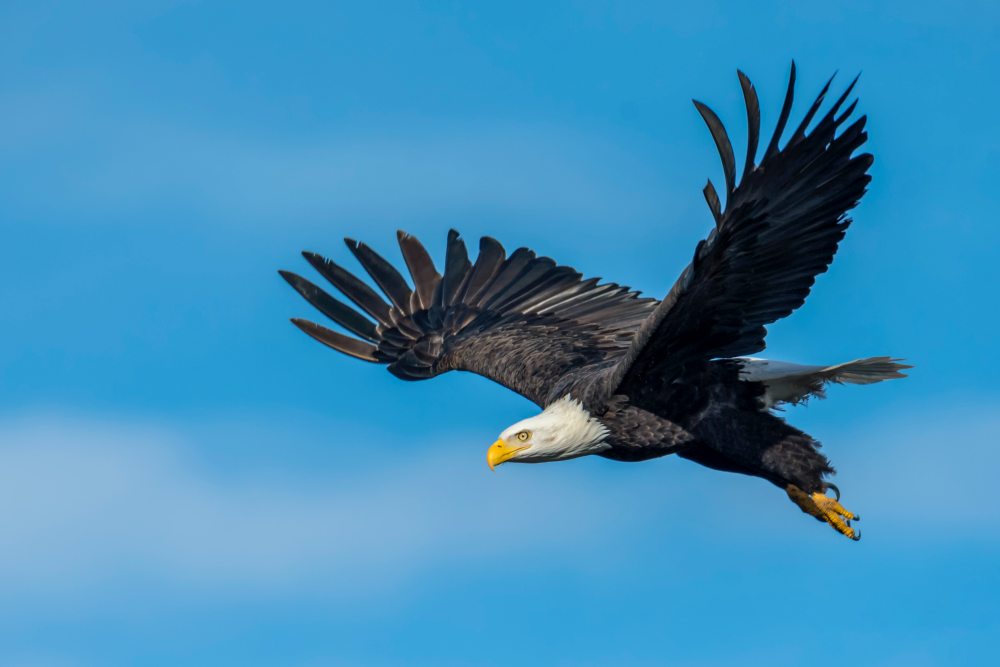
The Pacific Northwest is home to a wide array of fascinating wildlife. The diverse ecosystem ranging from the rocky coastlines to the snow-covered mountain ranges to the vast expanse of the blue sea is home to many species of mammals, fish, and birds. While you can find ordinary wildlife like raccoons, skunks, and squirrels, this region is prominent for its abundance of orcas, minke whales, humpbacks, and gray whales, and whales are only the start. Find out some of the fascinating wildlife you can see while traveling across this epic region.
Humpback Whales
These massive sea mammals can grow to be 15 meters long, weighing about 80,000 pounds. Despite their massive sizes, these creatures feed on tiny fish and krill. They store up the energy from the food they consume as fat, and it sustains them through their breeding and birthing season when they go without food. If you're lucky, you might spot one breaching and splashing their tails while you travel across the Salish Sea. Humpback whales are also great singers, and they can make music for up to 20 minutes.
Sea and River Otters
Otters are members of the weasel family found in all continents except Australia and Antarctica. While they live in freshwater rivers, wetlands, and lakes, the sea otter has adapted to live in the ocean. These creatures have several amazing attributes. First is their ingenious method to open shellfish. While floating on its back, a sea otter will place a rock on its chest and smash the mollusk on it until it cracks open. When it's nap time, they intertwine their feet with one another so they don't drift away. What a sight to behold.
Roosevelt Elk
Named after Theodore Roosevelt, these elk are the largest elk subspecies in North America, weighing about 700-875 pounds. They reside in the forests of the Pacific Northwest. During the summer, they migrate to lower elevations to avoid the strong winter storms. During the spring, males will grow their antlers, which they use to fight other male elks in the herd for mating rights with the female.
Bald Eagle
This majestic king of the sky soars high in the sky over the Salish Sea. With a wingspan of 8 feet, this bird is a wonder to behold. Unsurprisingly, these large birds also require large nests. Bald eagle nests are generally 4-5 feet wide and 2-4 feet deep, although a nesting pair will add nesting material to the nest every year. Just in the 1940s, experts thought this eagle would be hunted to extinction. But thanks to the enacted Bald Eagle Protection Act, as well as other actions to protect them in later years, their population recovered. They are a thriving species today, and you can catch a glimpse of them.
Tufted Puffin
These medium-sized pelagic seabirds thrive throughout the North Pacific Ocean. They were also prevalent in the state of Washington before their population dropped from 25,000 in the early 20th century to 2,958 today. They are easily recognizable by their thick red bill and yellow tufts. And if you're lucky, you can spot these lovely birds on the Pacific Northwest coast during the spring and summer.
The diversity of wildlife in the Pacific Northwest is truly amazing, and the list we've examined is nowhere exhaustive. Here are other wildlife worth mentioning:
- The North American Cougar
- The British Columbia Wolf
- Gray Whale
- Harbor Porpoise
- Stellar Seal Lion
- Alcids
- Cormorants ... and more.
EDITORIAL POLICY
Editorial Policy: The Flash List is dedicated to providing trustworthy editorial content by maintaining strict ethical standards, journalistic integrity, and credible professionalism regardless of any remuneration as working media. The Flash List is not affiliated with third-party companies mentioned and makes no endorsement or guarantee expressed or implied. The preceding article is intended for informational reference only, and does not constitute advice of any kind. Moreover, a qualified professional should be consulted regarding any lifestyle consideration, medical treatment, or monetary transaction, etc. Content contains affiliated link(s) for which compensation was received in accordance with USFTC regulations and terms and conditions.
MORE ON THE FLASH LIST
































